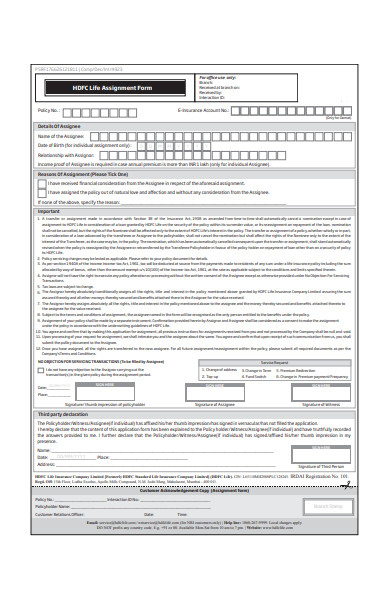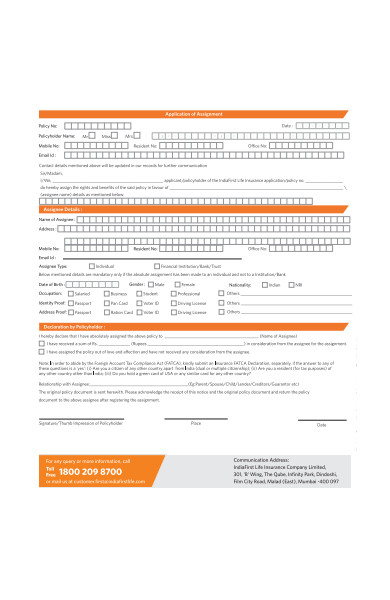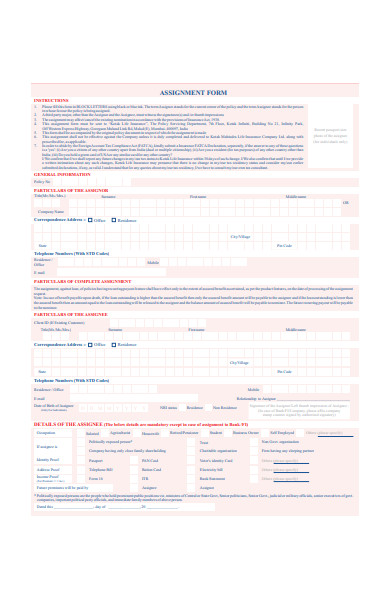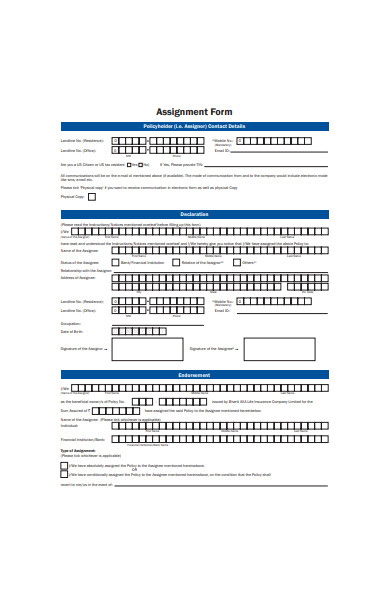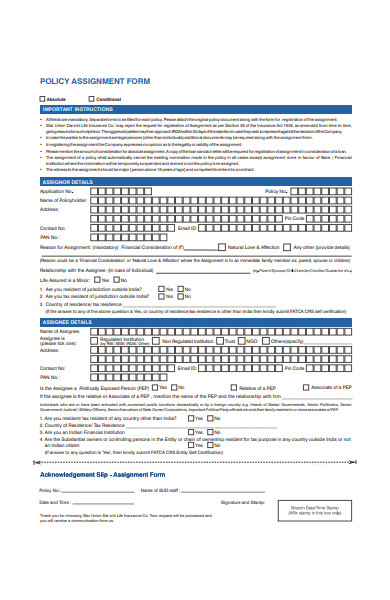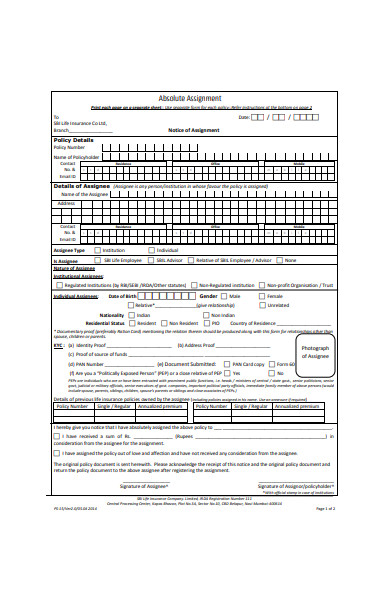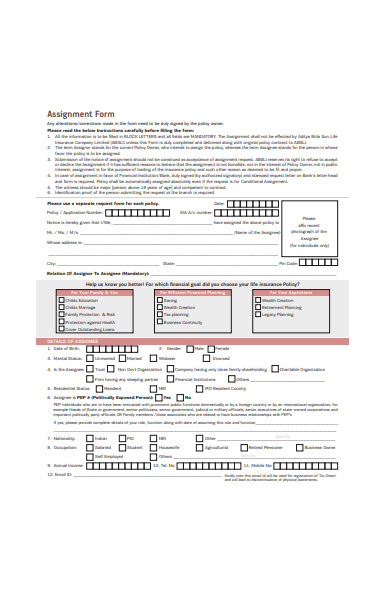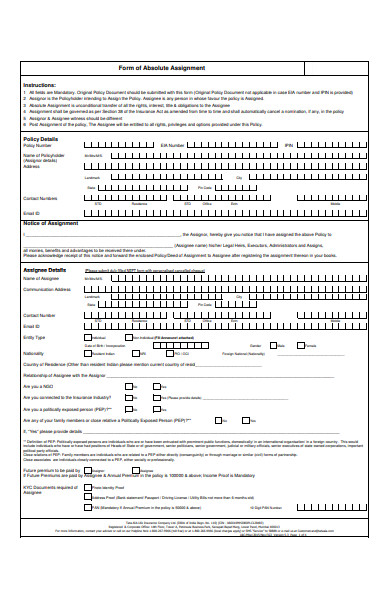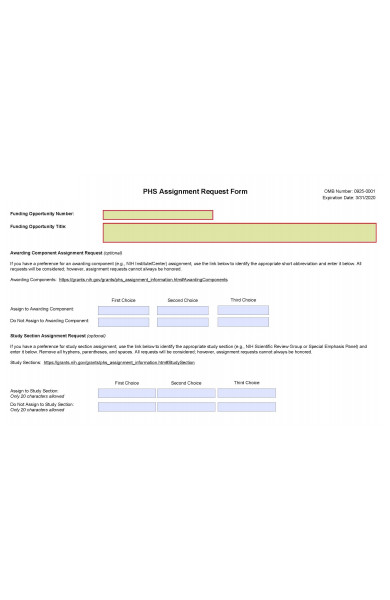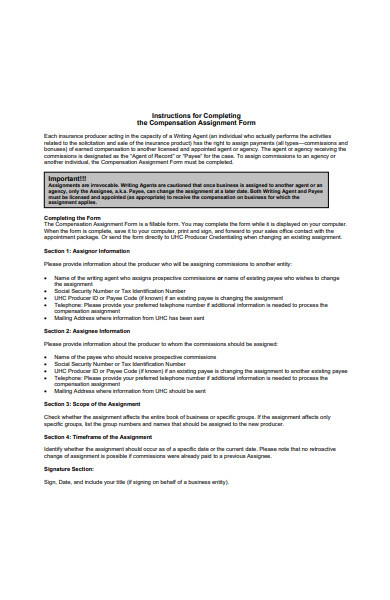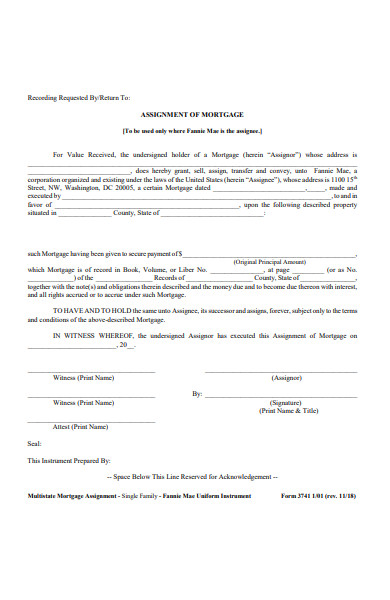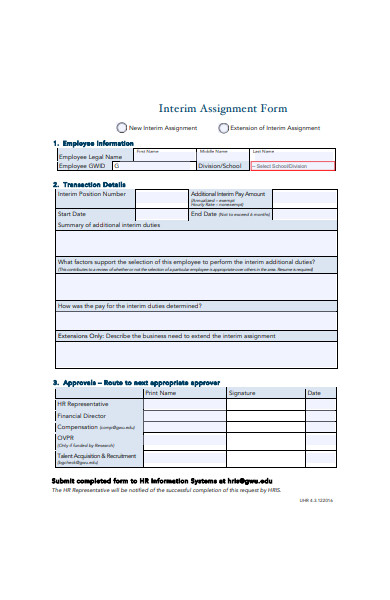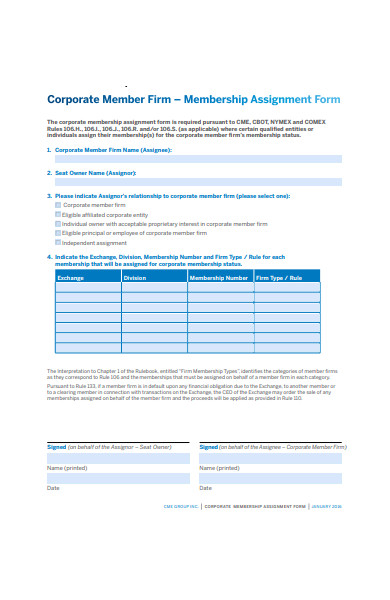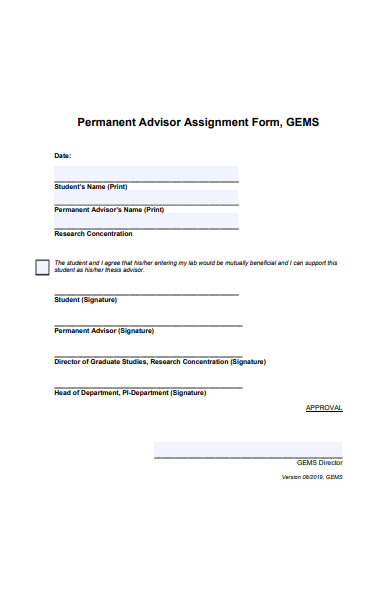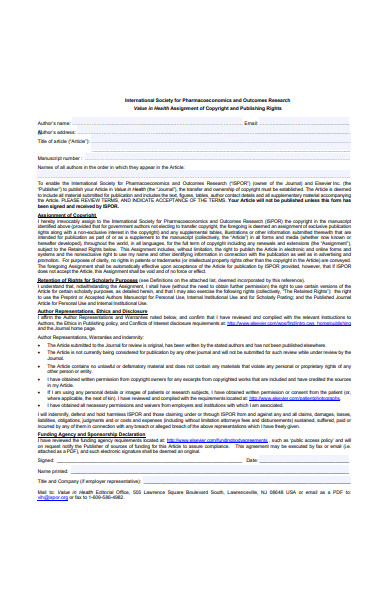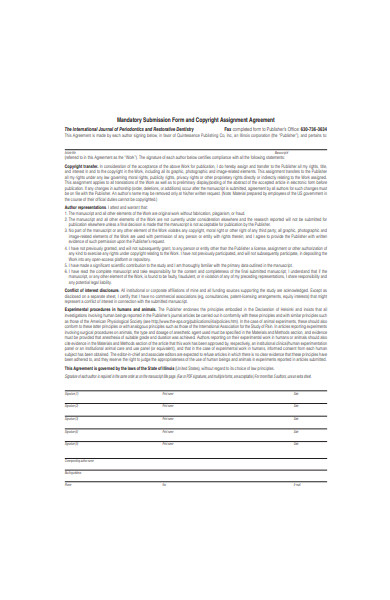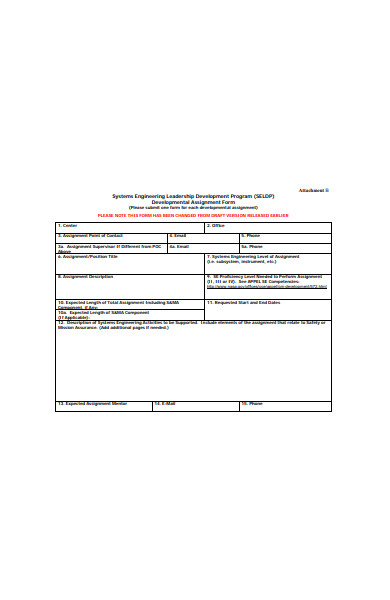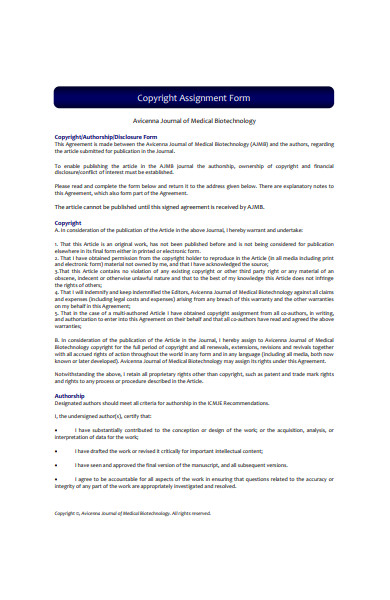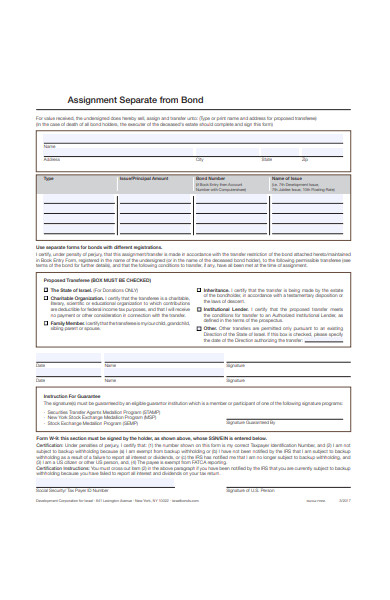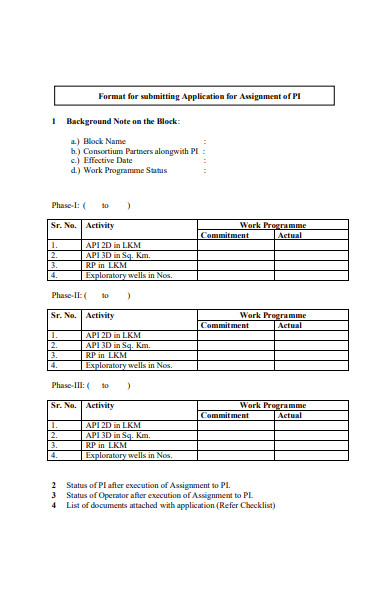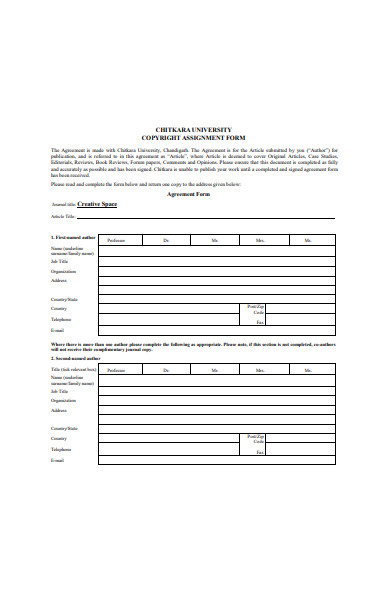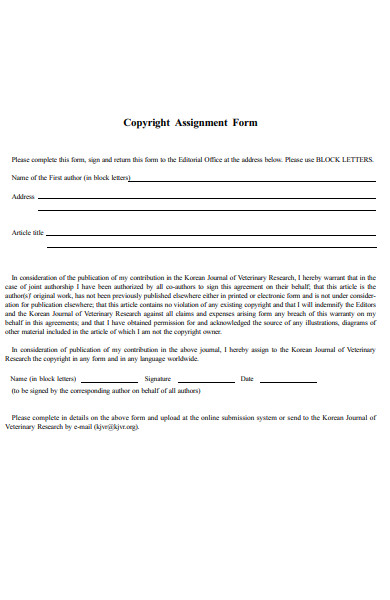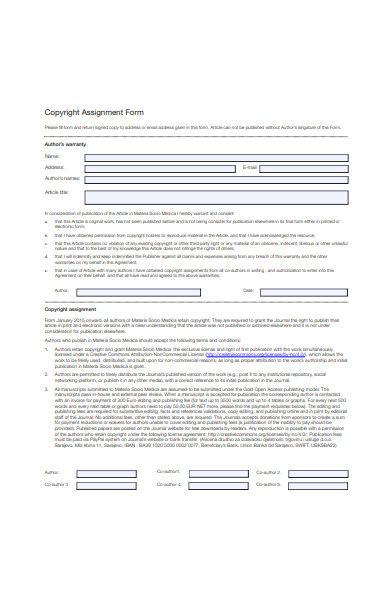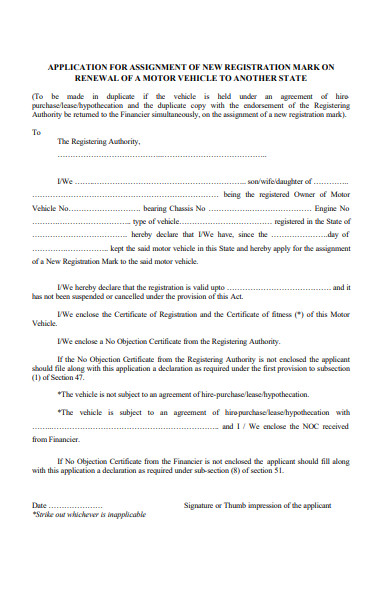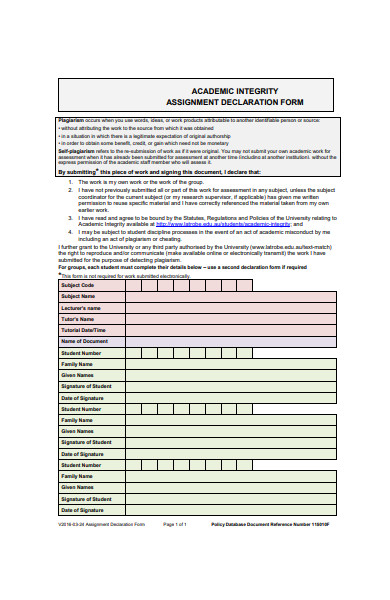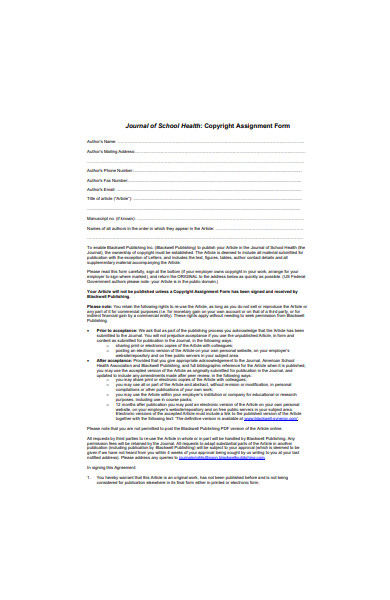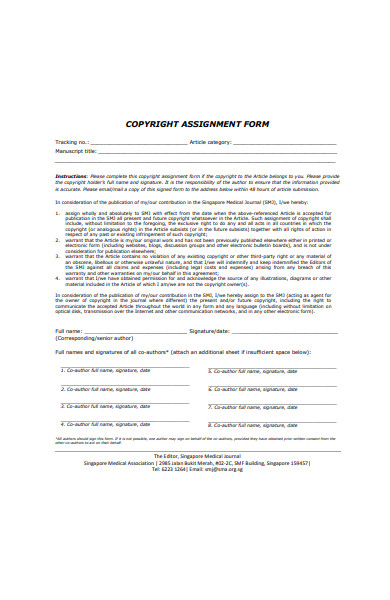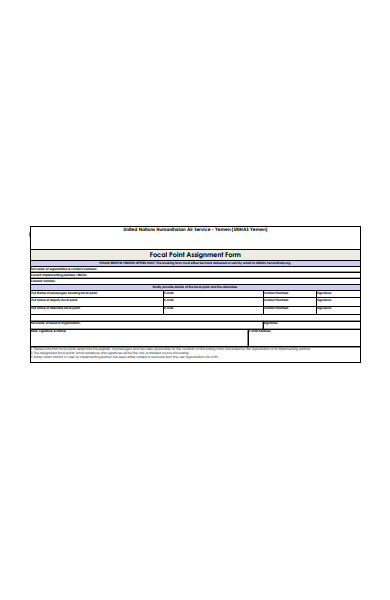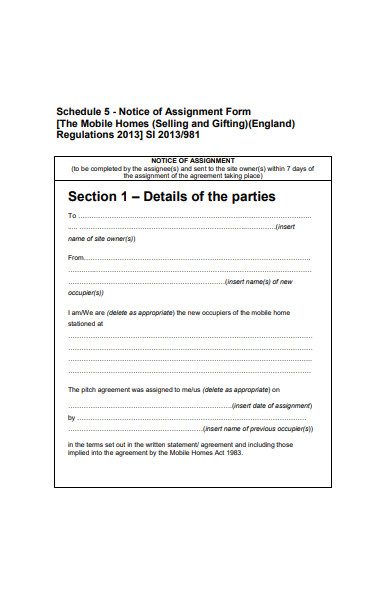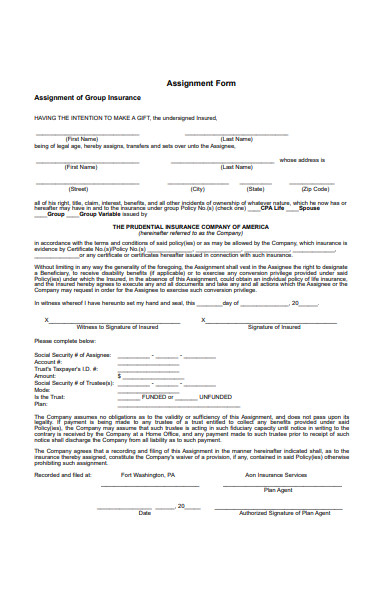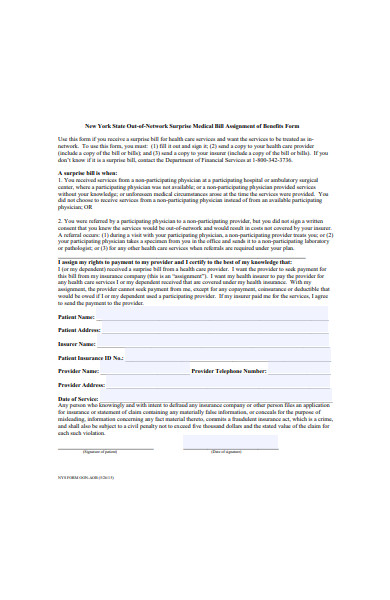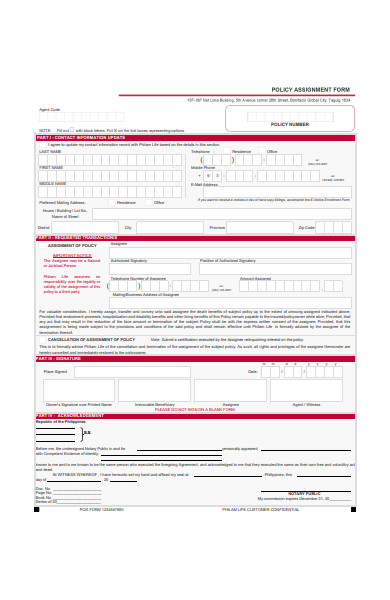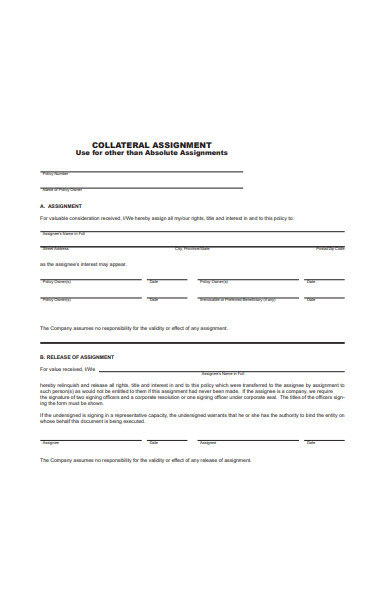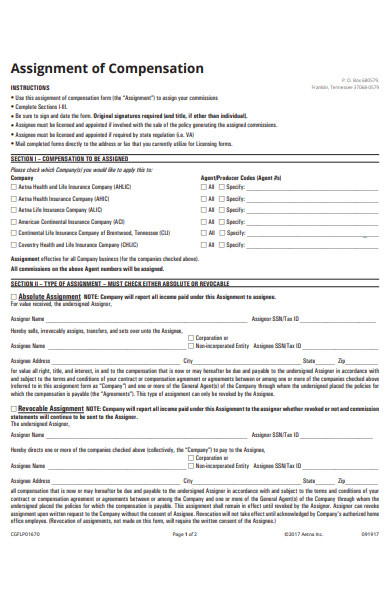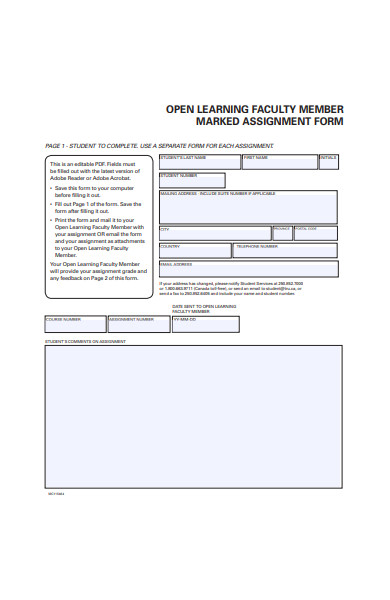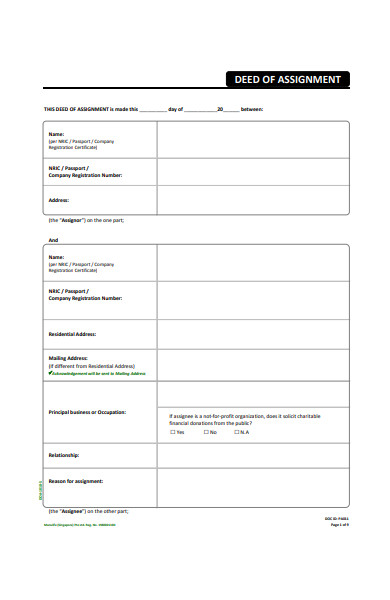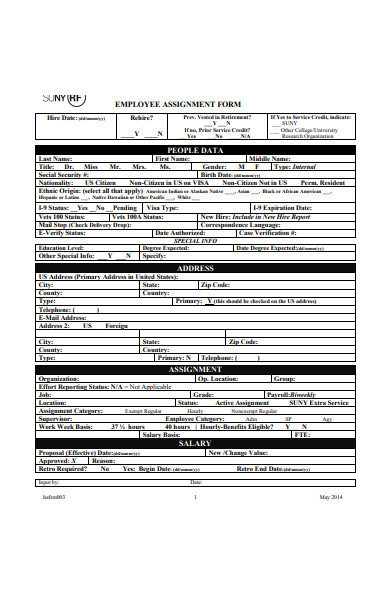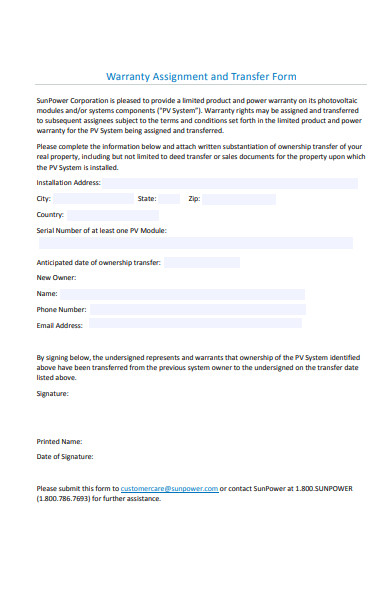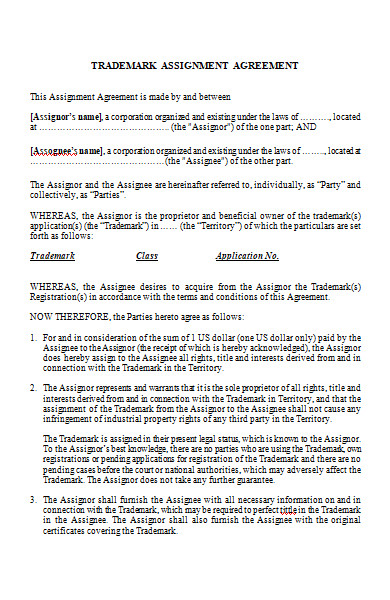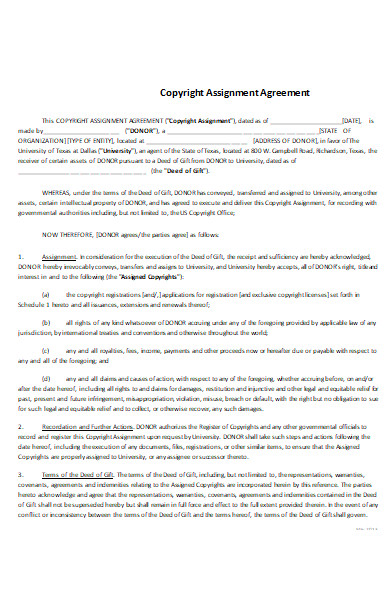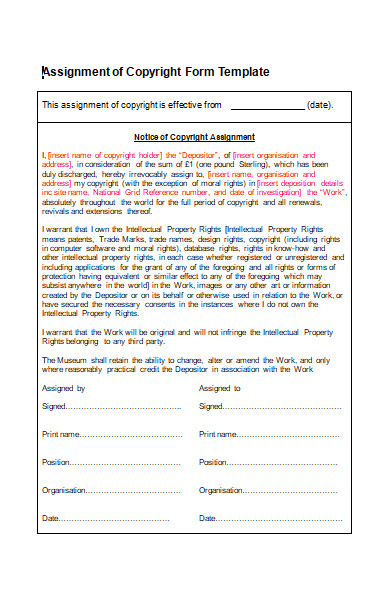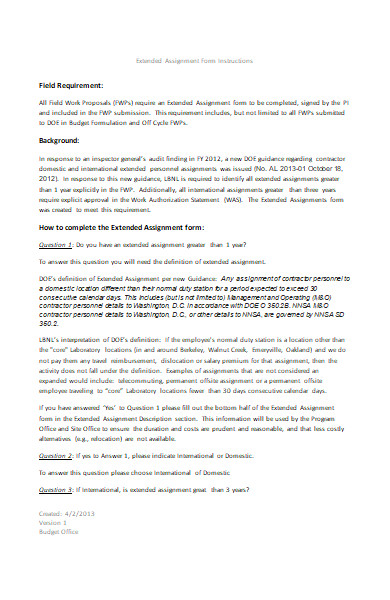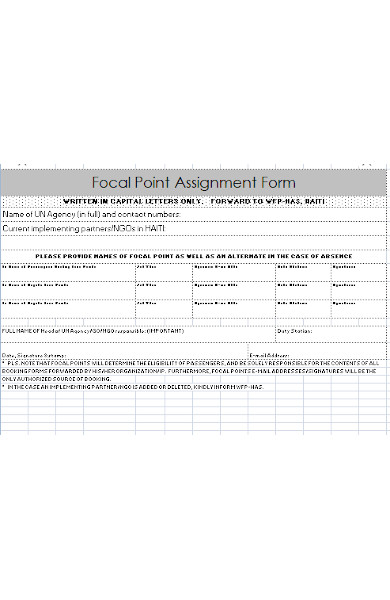There is a reason why people own a lot of things. People create memories, and along the way, the memories get housed in their different properties—paintings, cars, houses, and many more. And as people move forward with life, some of the things that they own become less of a priority and more of additional baggage. But they don’t want to throw away their once-cherished object. They would instead assign it to a new owner through the help of assignment forms. The document makes the transfer of ownership rights happen legally and makes it easier for the previous owner to have information on the new owner.
FREE 51+ Assignment Forms in PDF | MS Word| XLS
1. Assignment Form Template
2. Bank Assignment Form
3. Assignment Application Form
4. Assignment Form Format
5. Life Insurance Assignment Form
6. Notice of Assignment Form
7. Assignment Form in PDF
8. Assignment Form Sample
9. Absolute Assignment Form
10. Policy Assignment Form
11. Absolute Assignment Form in PDF
12. Insurance Assignment Form
13. Form of Absolute Assignment
14. Simple Assignment Request Form
15. Compensation Assignment Form
16. Assignment Form of Mortgage
17. Interim Assignment Form
18. Membership Assignment Form
19. Permanent Advisor Assignment Form
20. Assignment of Copyright
21. Assignment Agreement Form in PDF
22. Developmental Assignment Form
23. Copyright Assignment Form
24. Assignment Separate from Bond
25. Application for Assignment Form
26. Worker Assignment Form
27. Copyright Assignment Form in PDF
28. Stock Assignment Form
29. Simple Copyright Assignment Form
30. Copyright Assignment Form Template
31. Assignment Application Form in PDF
#
32. Assignment Declaration Form
33. Copyright Assignment Form Sample
34. Formal Copyright Assignment Form
35. Property Assignment Form
36. Certificate Assignment Form
37. Focal Point Assignment Form
38. Notice of Assignment Form
39. Basic Assignment Form
40. Medical Bill Assignment of Benefits Form
41. Policy Assignment Form in PDF
42. Absolute Assignment in PDF
43. Assignment Form of Compensation
44. Marked Assignment Form
45. Deed Assignment Form
46. Employee Assignment Form
47. Warranty Assignment and Transfer Form
48. Trademark Assignment Agreement Form
49. Copyright Assignment Agreement Form
50. Assignment of Copyright Form Template
51. Extended Assignment Form
52. General Assignment Form
What Is an Assignment Form?
An assignment form is a legal document that aids in formally transferring ownership rights and benefits of a specified property from one party to another. But there are limits to what a person can assign or transfer to another. A person may not transfer a burden, duty, or detriment without a consenting agreement from the other party as it is not allowed by the law.
Moreover, the right or benefit can be a form of a gift, or it can be a paid contractual consideration such as money. And the right or benefit may also be vested or contingent, depending on the person/s who wanted the transferral. The persons involved need to discuss the process thoroughly to avoid any confusion. But you may ask, who are the persons involved then?
Who Are Part of the Property Assignment?
As they said, two heads are always better than one. The statement can highly apply to property assigning since it does not happen with only one person on board. Just like an agreement, an assignment of property needs two or three people to discuss and converse what will happen to the property and what are the conditions for it. But before anything else, who are these people involved with the property assigning?
There are three people involved during the assignment—the assignor, the assignee, and the third party. The assignor is the person in the original contract who is transferring their rights and benefits to a new owner. An assignee is a person receiving the rights and benefits from the previous owner or the assignor. And lastly, the third party is the individual or corporation that entered into the original contract with the assignor. Still, the third party may not always be applicable or present in an assignment.
During the assignment, the assignor should not solely decide about the rights involved because the assignee or the third party may not agree to it. Although the assignor has more decision-making rights for the assignment, he or she should still consult with the other parties involved. It might be a great idea to ask for their insight and permission to avoid violating any property policies.
The Elements of an Assignment Form
When assigning rights, the assignor needs to have an assignment form on hand. The document serves to legalize the transfer of ownership in the eyes of the public and the local government. But what does the paper need to have inside? Here are the following elements and information that must be present in the document for it to become valid proof of the transfer process.
-
The Assignor’s, the Assignee’s, and the Third Party’s Information
Naturally, the local government and other authorities will want to know who took part in the assignment process. When a violation of the agreement happens, they will know who to look or address. And so, personal information of the assignor, assignee, and the third party such as their names, ages, and contact numbers highly need to be part of the document. Aside from the local authorities, other parties may also benefit from it too. The assignor will know how to contact the assignee or the third party if there are concerns and vice versa.
-
The Original Contract Information (Optional)
Before the property assigning happens, both parties must reread to understand the terms and conditions of the original contract, if there is one. By doing so, the assignor can still conduct the assignment and avoid breaching the original contract’s terms. Thus promoting a smooth and hassle-free transaction.
-
A Short Description of the Contract Rights
Putting everything out in the open is one way to avoid misunderstanding the agreement. And most assignment forms contain a small section filled with short descriptions of the nature of the contract. The brief details usually answer the following questions: What decisions were agreed upon by both parties? What are the benefits? What rights does the assignee gain after the assignment?
-
The Signatures of the Parties Involved
Signatures are proofs of validity and legality, and so having all of the involved parties sign their names on the document once they all agree makes it official documentation of the transfer of ownership. And everyone would think that all of the parties fully agree to the terms and conditions cited in the document.
Interchangeable Terms: Assignment vs. Inheritance
We often hear the casual interchanging of the terms assignment and inheritance, as if these are identical. The two words somewhat have similar definitions, but upon closer inspection, you see the elements that separate them apart. For one, in an assignment, the assignor delegates who he deems as worthy to receive his properties. The assignor can freely select anyone, even those outside of his kin. In contrast, an inheritance gets defined as when a deceased person’s assets get instantly passed on only to their family or loved ones. No other person outside of this setup might be able to receive the inheritance unless it was specified beforehand.
How to Create an Assignment Form
Assigning of properties is no children’s game. You need to make the right decisions, read up a few property laws, and the like. The transferral of the rights process might be a bit extensive, but making the assignment form does not need to be. We’ve outlined an easy four-step guide that will assure you of a smooth and convenient way of creating the document.
Step 1: Get to Know the Assignee and Ask for His Information
A conversation is the first step in the process. Call up the assignee and the third party and schedule a meeting with them so you can ask for their information, such as their names, contact information, and many more. You need to know who you are transferring your ownership rights to so you can place it in the document for legal matters.
Step 2: Come to an Agreement with the Assignee
Once the assignee and the third party gave their personal and contact information to you, the next thing to do is to start discussing legal matters. Talk to them about the terms and conditions of the assignment and the property. And then list down the things that all three of you agree to.
Step 3: Make Use of an Assignment Form Template
The aim of this how-to guide is convenience. So instead of making an assignment form from scratch, better download a template from the Internet. Premade templates are quite convenient since you need only to select one that you like and open it. The sections and contents are customizable and compatible with any type of software.
Step 4: Fill Out all the Necessary Data Sections in the Template
Once you have the information and the template on hand, start filling out the model. Make sure that all the data are in the right data fields, and check for any grammatical or contextual errors from time to time. Afterward, have it signed by you, the assignee, and the third party.
FAQs
Do assignments only apply to physical properties?
Most assignment cases present only physical properties like homes and vehicles. But these are cases where transactions such as loans are subject and amenable to an assignment. The assignor may assign rights to the loan, but this would then require a third party borrower to make repayments to the assignee. For example, a mortgage loan note issued by a third party borrower.
Is the assignor still liable even after the assignment?
Assigning happens because the assignor wants to transfer his right to ownership of property. And thus, the assignor relinquishes any connections or benefits from the property. And once that happens, the assignor may no longer be held liable for whatever happens to the property.
Can assignments be revoked?
Once the assignment form gets signed, and once the assigning occurs, the assignor cannot revoke it and take back his property anymore. Once the assignor gives up his rights, it can never be regained again, unless the assignee assigns it back to the original owner. However, donation assignments can be revoked.
Life is a journey of gain and loss. With that, people bring objects with them as they move in life. However, time will come when people will have to give up their rights to some properties. They might not have the financial capability to manage or keep it anymore. And so, opting to transfer the item with the aid of legal assignment forms might just be the better solution rather than discarding it. After all, the objects or properties helped the previous owner at some point in their lives. And through the assignment, the property might become useful again to the new owner.
Related Posts
-
FREE 32+ Holiday Forms in PDF | MS Word
-
FREE 30+ Nonprofit Forms in PDF | MS Word
-
FREE 31+ Therapy Forms in PDF | MS Word | XLS
-
FREE 52+ Bid Forms in PDF | MS Word | XLS
-
FREE 32+ Communication Forms in PDF | MS Word | XLS
-
FREE 44+ E Commerce Forms in PDF | MS Word
-
FREE 30+ Animal Shelter Forms in PDF | MS Word
-
FREE 34+ Charity Forms in PDF | MS Word | Excel
-
FREE 35+ Advertising Forms in PDF | MS Word | XLS
-
FREE 53+ Sports Forms in PDF | MS Word | Excel
-
FREE 51+ Payment Forms in PDF | MS Word | Excel
-
FREE 52+ Subscription Forms in PDF | MS Word | Excel
-
FREE 50+ RSVP Forms in PDF | MS Word
-
FREE 50+ Recommendation Forms in PDF | MS Word
-
FREE 52+ Abstract Forms in PDF | MS Word | Excel


